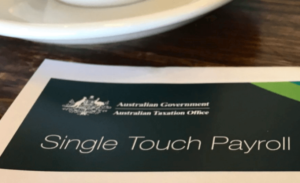 The difference between an employee and a contractor is not always easy to distinguish. If an employer incorrectly classifies their employee as a contractor, they could face significant penalties. Therefore it is imperative that employers understand the differences between an employee or contractor and correctly categorize their workers.
The difference between an employee and a contractor is not always easy to distinguish. If an employer incorrectly classifies their employee as a contractor, they could face significant penalties. Therefore it is imperative that employers understand the differences between an employee or contractor and correctly categorize their workers.
There are many factors which help determine whether a worker is an employee or contractor. A few of these are listed below.
Factors that may indicate you are an employee:
- The employer has a high degree of control over you. The employer determines what, how and where the work needs to be done.
- You are paid at an hourly or daily rate.
- The employer bears the risk of injury, insurance and rectification costs.
- You wear a company uniform.
Factors that may indicate you are a contractor:
- You have the discretion to decide what, how and where the work needs to be done and have the right to delegate your work to someone else.
- You are only paid to achieve a result.
- You have to fix mistakes at your own cost – you do not get paid to fix your errors.
- You provide your own tools or assets necessary to complete the job.
If an employer incorrectly classifies an employee as a contractor, the employee would not have received the 9.5% super guarantee that they should have been entitled to. Because the employer has failed to make these superannuation payments, they will be liable to pay the super guarantee charge. This is made of the following components:
- The employee’s super shortfall,
- Interest of 10% per annum, and
- An administration fee of $20 per employee per quarter.
As a further penalty, unlike normal super guarantee contributions, the super guarantee charge amounts are not tax deductible to the employer.
Further, businesses can also be liable to pay PAYG withholding penalty for failing to deduct the tax from an employee’s payments and an additional super guarantee charge of up to 200%.
Given the severity of the penalties, it is extremely important for businesses to ensure they correctly classify their workers as employees or contractors. The ATO has a decision tool that can assist you with this on their website.
Pro Tip:
Apprentices, trainees, labourers and trades assistants are always treated as employees as per the ATO.
Related blogs:
When do I need to pay super for contractors?
Do I need to pay payroll tax?
Email: tessa@faj.com.au









 Land Tax is a State imposed tax paid annually by many land owners in Australia. In WA Land Tax is calculated on the aggregated unimproved value of all land held by an owner as at midnight 30th June each year. For example, if you solely own two properties with unimproved values of $330,000 and $270,000, you have an aggregated value of $600,000.
Land Tax is a State imposed tax paid annually by many land owners in Australia. In WA Land Tax is calculated on the aggregated unimproved value of all land held by an owner as at midnight 30th June each year. For example, if you solely own two properties with unimproved values of $330,000 and $270,000, you have an aggregated value of $600,000.